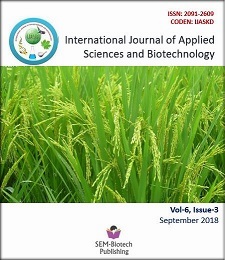Ecophysiological Studies of Lead Stress on Vigna mungo L. Seedlings
DOI:
https://doi.org/10.3126/ijasbt.v6i3.20595Keywords:
Mung, seedlings, pigments, Lead, growthAbstract
In the present study of eco physiological effects of lead nitrate was observed by taking a local cultivated cereal crop Vigna mungo (L). The germination data showed that there is a negative impact of concentration of lead nitrate on the germination of seeds. There is decrease in seed germination at higher concentration in comparison to control. Root and shoot growth of seedling was effected when exposed to high concentration of lead nitrate. Roots were more affected and much reduced than shoots. Morphologically they look different from normal roots by their size and shapes. Effect of different concentration of lead nitrate was visible in different pigment concentration of leaves. Lead toxicity inhibits chlorophyll formation which visually showed in degeneration of green pigments in shoots exposed to different concentration of lead nitrate. With the increase in concentration of the toxicant, the exposed seedlings showed a decline in chl-a, chl-b, total chl, carotenoid and pheophytin content in shoots. This was a clear indication that the fall in the growth rate, pigment content had direct impact on photosynthesis. Conclusively, our results show that lead at higher concentration decreases seed germination, chl-a, chl-b, total chl, carotenoid and pheophytin contents in the mung seedlings.
Int. J. Appl. Sci. Biotechnol. Vol 6(3): 227-231




